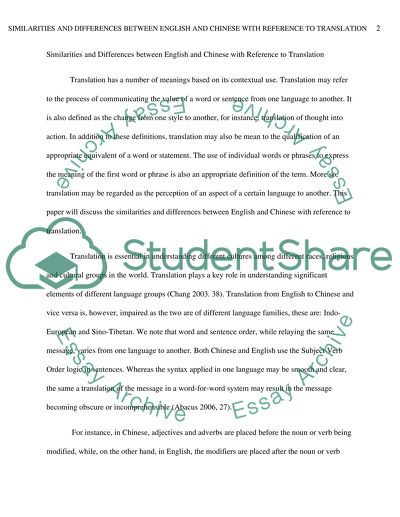Cite this document
(Differences between English and Chinese with Reference to Translation Case Study, n.d.)
Differences between English and Chinese with Reference to Translation Case Study. Retrieved from https://studentshare.org/english/1582412-from-perspectives-of-grammar-and-culture-critically-discuss-similarities-and-differences-betwwen-english-and-chinese-with-referecne-to-translation
Differences between English and Chinese with Reference to Translation Case Study. Retrieved from https://studentshare.org/english/1582412-from-perspectives-of-grammar-and-culture-critically-discuss-similarities-and-differences-betwwen-english-and-chinese-with-referecne-to-translation
(Differences Between English and Chinese With Reference to Translation Case Study)
Differences Between English and Chinese With Reference to Translation Case Study. https://studentshare.org/english/1582412-from-perspectives-of-grammar-and-culture-critically-discuss-similarities-and-differences-betwwen-english-and-chinese-with-referecne-to-translation.
Differences Between English and Chinese With Reference to Translation Case Study. https://studentshare.org/english/1582412-from-perspectives-of-grammar-and-culture-critically-discuss-similarities-and-differences-betwwen-english-and-chinese-with-referecne-to-translation.
“Differences Between English and Chinese With Reference to Translation Case Study”. https://studentshare.org/english/1582412-from-perspectives-of-grammar-and-culture-critically-discuss-similarities-and-differences-betwwen-english-and-chinese-with-referecne-to-translation.


